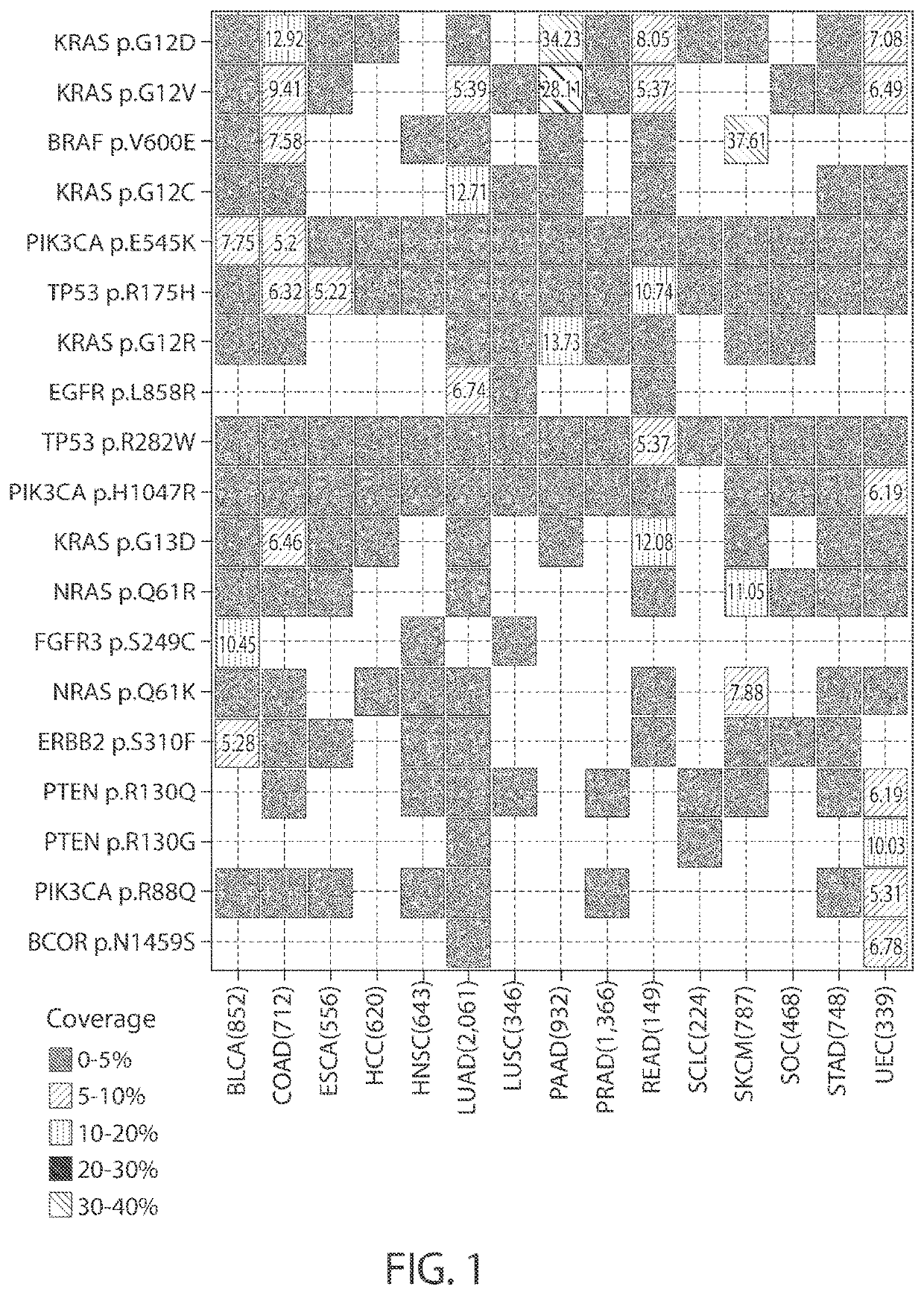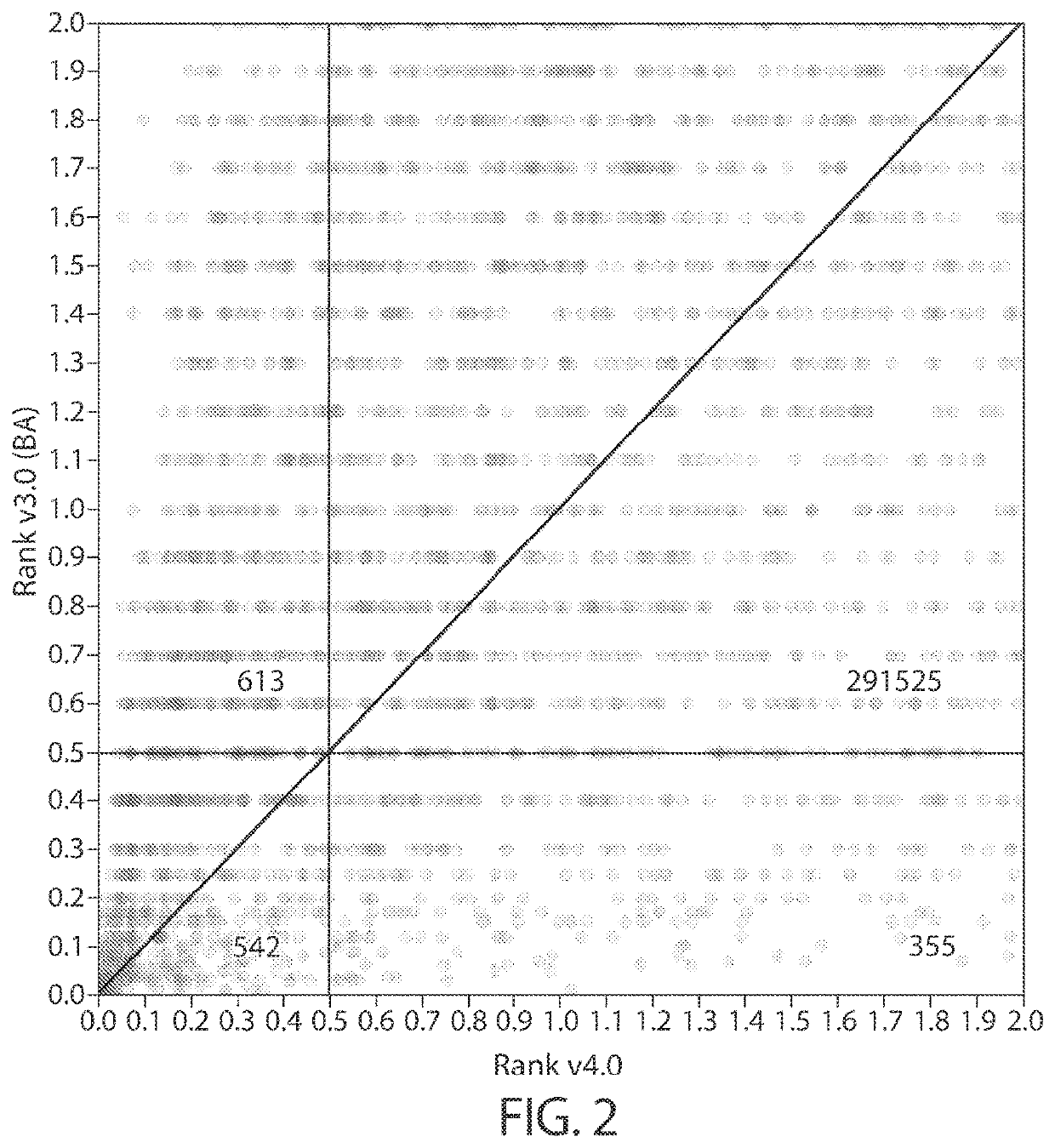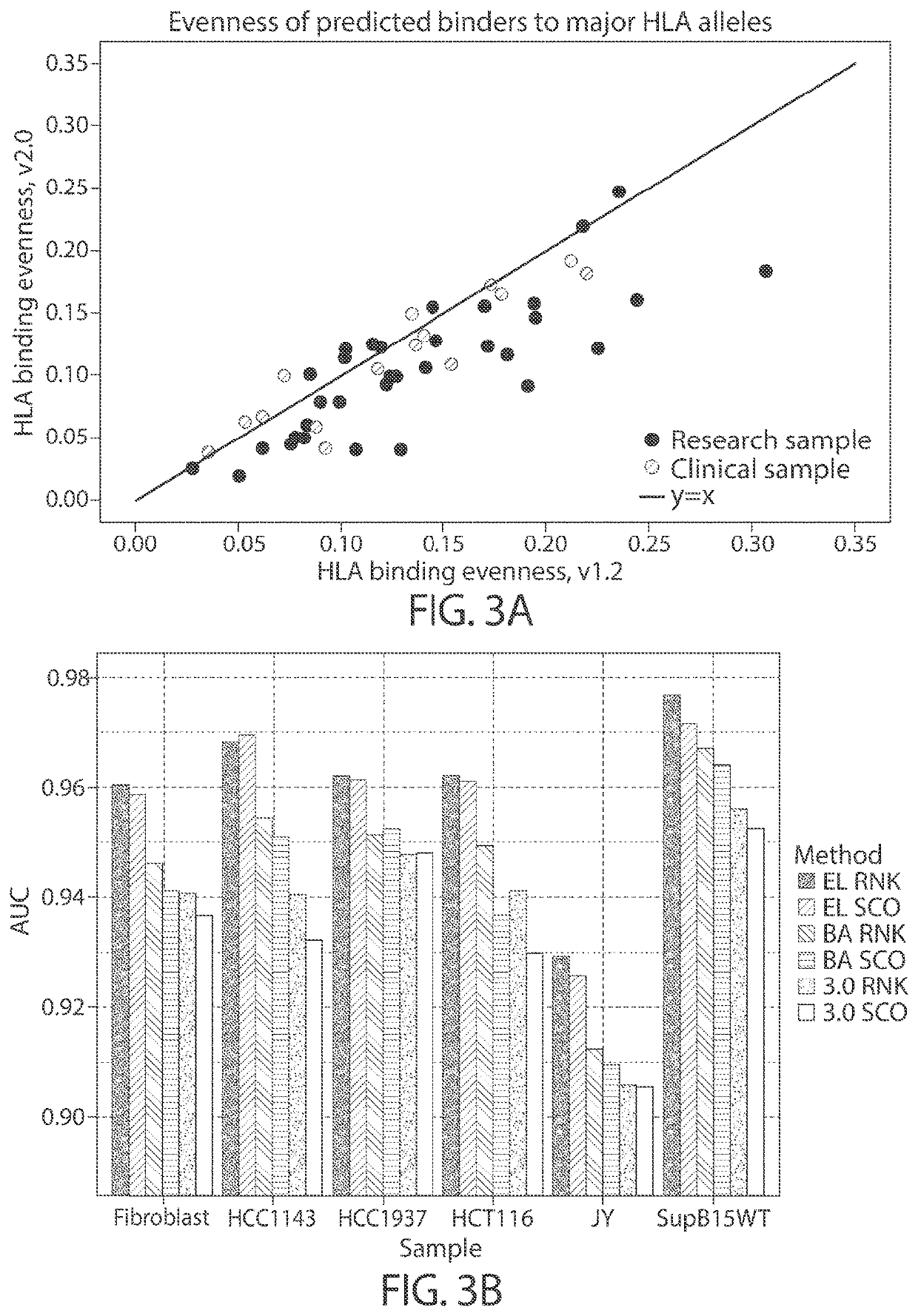Personalized cancer vaccine epitope selection
a cancer vaccine and epitope technology, applied in the field of personalized cancer vaccine epitope selection, can solve the problems that nucleic acid vaccines are generally not optimized to have the greatest efficacy for their size or length, and achieve the effects of optimizing anti-cancer efficacy, optimizing anti-cancer efficacy, and optimizing anti-cancer efficacy
- Summary
- Abstract
- Description
- Claims
- Application Information
AI Technical Summary
Benefits of technology
Problems solved by technology
Method used
Image
Examples
example 1
re of Polynucleotides
[0497]According to the present disclosure, the manufacture of nucleic acids and / or parts or regions thereof may be accomplished utilizing the methods taught in the art including those detailed in International Application WO2014 / 152027 entitled “Manufacturing Methods for Production of RNA Transcripts”, the contents of which is incorporated herein by reference in its entirety for this purpose.
[0498]Purification methods may include those taught in International Application Nos.: WO2014 / 152030 and WO2014 / 152031, each of which is incorporated herein by reference in its entirety for this purpose.
[0499]Detection and characterization methods for use with the nucleic acids may be performed using any methods known in the art including those taught in WO2014 / 144039, which is incorporated herein by reference in its entirety for this purpose.
[0500]Characterization of the polynucleotides of the disclosure may be accomplished using, for example, a procedure selected from the ...
example 3
DNA Production
[0515]PCR procedures for the preparation of cDNA are performed using 2×KAPA HIFI™ HotStart ReadyMix by Kapa Biosystems (Woburn, Mass.). This system includes 2×KAPA ReadyMix12.5 μl; Forward Primer (10 μM) 0.75 μl; Reverse Primer (10 μM) 0.75 μl; Template cDNA −100 ng; and dH2O diluted to 25.0 μl. The reaction conditions are at 95° C. for 5 min. and 25 cycles of 98° C. for 20 sec, then 58° C. for 15 sec, then 72° C. for 45 sec, then 72° C. for 5 min., then 4° C. to termination.
[0516]The reaction is cleaned up using Invitrogen's PURELINK™ PCR Micro Kit (Carlsbad, Calif.) per manufacturer's instructions (up to 5 μg). Larger reactions will require a cleanup using a product with a larger capacity. Following the cleanup, the cDNA is quantified using the NANODROP™ and analyzed by agarose gel electrophoresis to confirm the cDNA is the expected size. The cDNA is then submitted for sequencing analysis before proceeding to the in vitro transcription reaction.
example 4
Transcription (IVT)
[0517]The in vitro transcription reaction generates nucleic acids containing uniformly modified nucleic acids. Such uniformly modified nucleic acids may comprise a region or part of the nucleic acids of the disclosure. The input nucleotide triphosphate (NTP) mix is made in-house using natural and un-natural NTPs.
[0518]A typical in vitro transcription reaction includes the following:
1Template cDNA1.0 μg210x transcription buffer 2.0 μl(400 mM Tris-HCl pH 8.0,190 mM MgCl2, 50 mM DTT, 10 mM Spermidine)3Custom NTPs (25 mM each)7.2 μl4RNase Inhibitor 20 U5T7 RNA polymerase3000 U6dH20Up to 20.0 μl. and7Incubation at 37° C. for 3 hr-5 hrs.
[0519]The crude IVT mix may be stored at 4° C. overnight for cleanup the next day. 1 U of RNase-free DNase is then used to digest the original template. After 15 minutes of incubation at 37° C., the mRNA is purified using Ambion's MEGACLEAR™ Kit (Austin, Tex.) following the manufacturer's instructions. This kit can purify up to 500 μg of...
PUM
| Property | Measurement | Unit |
|---|---|---|
| diameter | aaaaa | aaaaa |
| time | aaaaa | aaaaa |
| time | aaaaa | aaaaa |
Abstract
Description
Claims
Application Information
 Login to View More
Login to View More - R&D
- Intellectual Property
- Life Sciences
- Materials
- Tech Scout
- Unparalleled Data Quality
- Higher Quality Content
- 60% Fewer Hallucinations
Browse by: Latest US Patents, China's latest patents, Technical Efficacy Thesaurus, Application Domain, Technology Topic, Popular Technical Reports.
© 2025 PatSnap. All rights reserved.Legal|Privacy policy|Modern Slavery Act Transparency Statement|Sitemap|About US| Contact US: help@patsnap.com



